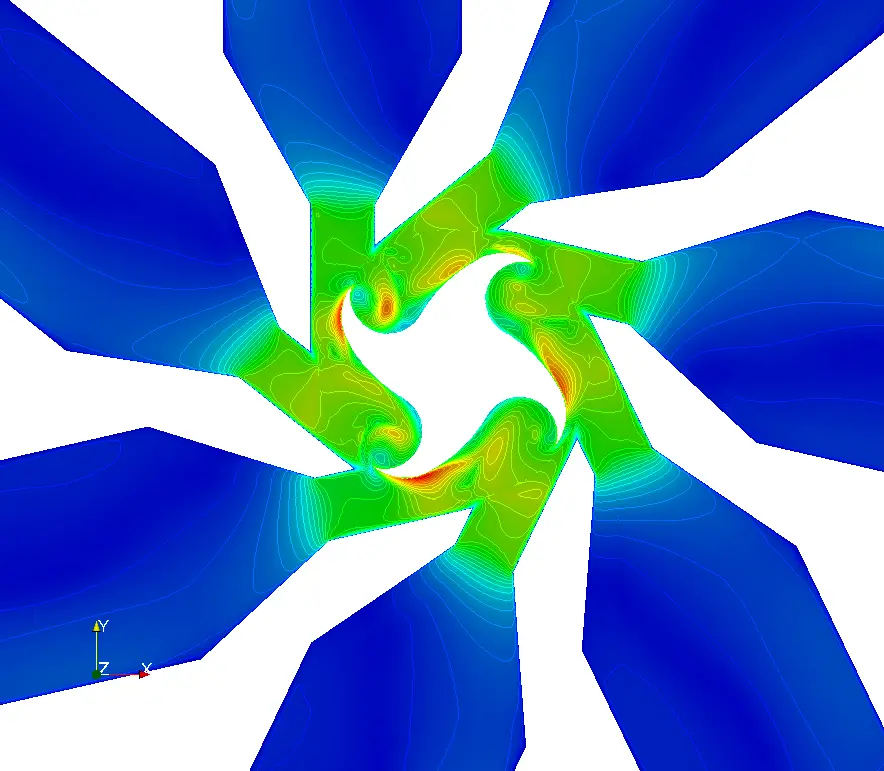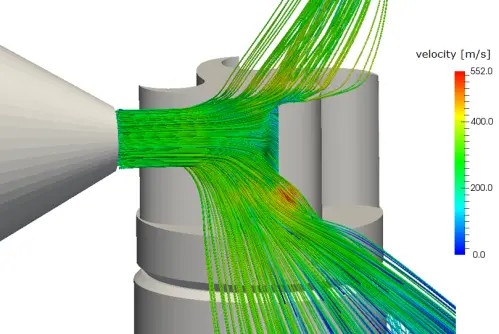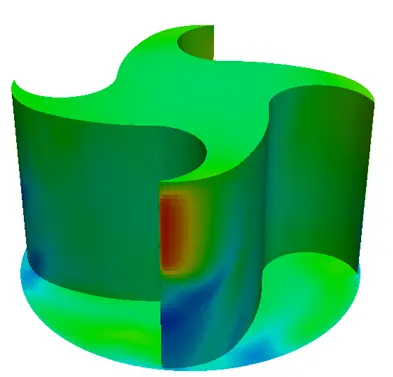Project example: NMR Microturbine
Nuclear magnetic resonance (NMR) spectroscopy is a popular research technique used to determine physical and chemical substances and properties. Samples are spun in a strong, static magnetic field and exposed to high-frequency pulses.

A gas-powered microturbine 1.3 mm or less in diameter generates this rotation. The high frequencies of up to 100 kHz, which are key in this process, cause lossy flow effects such as recirculation, separations and compression shock.

Maximising the speed at a defined system pressure requires optimising the turbine geometry and the housing.
The goal of this project was to investigate the flow conditions at different operating speeds to derive approaches for increasing the efficiency of the turbine.
Findings

The results of the simulation show excellent conformance with the measurement series.
The simulations showed that with this system configuration’s periodic pressure peaks will occur on the convex sides of the vanes, inducing a section modulus.
The findings further show that the seven drive nozzles negatively affect each other. This provided initial approaches for optimisation whilst adhering to the available production options.
At a glance
Institutes and centres involved:
Partner:
Co-financing:
- Innosuisse (former CTI)
Project status: running